Analytical Services
1) Lipid (Fatty Acids) Analysis with GC/MS1
The Analytical Instrumentation Core (AIC) is now offering Fatty Acid analysis where we can detect and quantify both free and total fatty acids through the use of our HP 6890/5973 Gas Chromatograph and Mass Spectrometer (GC/MS). Our GC/MS is designed for analyzing small molecules (up to 1,000 Da) such as fatty acids, lipids, monosaccharides, amino acids and neurotransmitters.
Currently, we are able to analyze the following sample types*:
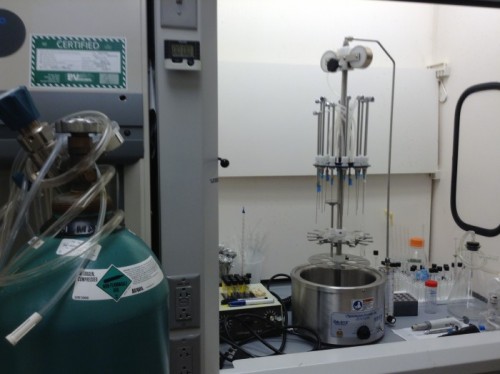 Equipment for Fatty Acid Extraction
Equipment for Fatty Acid Extraction
- Plasma
- Blood
- Cell lines
- Tissues
- Cell Filtrates
- Microorganisms (BSL2)
- Other Biological Samples
*If your sample type is not listed above please let us know and we can discuss other ways of analyzing your sample!
Classes of Fatty Acids Monitored:
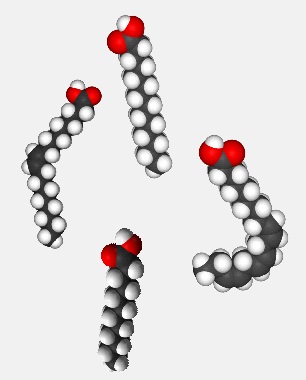
- C12:0 Lauric (Dodecanoic) Acid
- C14:0 Myristic (Tetradecanoic) Acid
- C15:0 Pentadecanoic Acid
- C16:0 Palmitic (Hexadecanoic) Acid
- C17:0 Margaric (Heptadecanoic) Acid
- C18:0 Stearic (Octadecanoic) Acid
- C18:1 Oleic Acid
- C18:2 Linoleic Acid
- C18:3 Linolenic Acid
- C20:0 Eicosanoic (Arachidic) Acid
- C20:3 Dihomo- gamma linoleic Acid
- C20:4 Arachidonic Acid
- C22:0 Behenic (Docosanoic) Acid
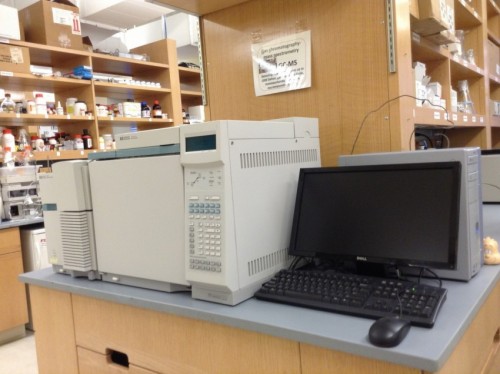 HP 6890/5973 CG/MS
HP 6890/5973 CG/MS
How We Analyze Your Samples:
- FA Standards are first added to samples.
- Lipids are then extracted (saponification is done for total FA only).
- Chemical derivatization occurs (methylation).
- Samples are injected into the GC/MS for analysis.
- Data is collected and organized into a report.
How the Results Are Reported:
For Free Fatty Acids Analysis: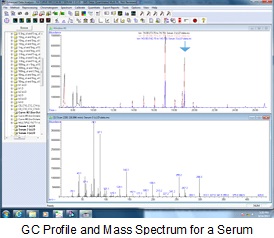
- Classes of the free fatty acids in the sample
- Concentration of each free fatty acid (µg/ml)
- Percentage (%) of each fatty acid out of the total amount of fatty acids
For Total Fatty Acids Analysis:
- Classes of the total fatty acids in the sample
- Concentration of each fatty acid (µg/ml)
- Percentage (%) of each fatty acid out of the total amount of fatty acids
Pricing: TBD (Project Dependent)
2) Sugars or Monosaccharides Analysis with GC/MS
In addition to fatty acid analysis, the AIC is also offering monosaccharide analysis using our HP 6890/5973 GC/MS.
Currently, we are able to analyze the following sample types:
- Plasma
- Blood
- Cell lines
- Tissues
- Cell Filtrates
- Microorganisms (BSL2)
- Other Biological Samples
How We Analyze Your Samples:
First, internal standards will be added to your samples before the actual sample extraction takes place. Next, the sugars are hydrolyzed through acid-catalyzed reactions. The sugars are then reduced, chemically derivatized and then injected into the GC/MS for analysis. Finally, the data is collected and organized into a report for the user.
Classes of Sugars Monitored:
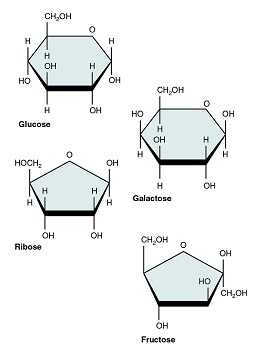
- Pentoses
- Hexoses
- Aminosugars
- Glucose
- Galactose
- Mannose
- Fructose
- Rhamnose
- Ribose
- Arabinose
- Xylose
- GlcN
- Others*
*Please inquire about other sugars that are not on this list to see if we are able to analyze them.
How the Results Are Reported:
- Classes of the monosaccharides in the sample
- Concentration of each sugar/monosaccharide (µg/ml)
- Percentage ratio of each sugar out of the total sugars (%)
Pricing: TBD (Project Dependent)
3) Other Services for Biochemical and Physiological Analysis
The Analytical Instrumentation Core possesses multiple analytical instruments to fit the ongoing needs of a wide variety of users. AIC personnel are able to perform various analyses that cater to the needs of individual projects. The analytical instruments include: GC, GC/MS, HPLC machines, Electrophoresis, Spectrophotometers (including plate readers), a Blood Analyzer, a Chemistry Analyzer, a Seahorse Extracellular Flux Analyzer, qPCR machines (StepOnePlus, ABI 7900HT and QS12K Flex OpeArray) and instruments for the multiplexing of proteins and cytokines. Our services are most beneficial for starting projects, laboratories that are lacking in personnel and expertise, epidemiological studies, and clinical research. As always, all charges will be reasonable and will depend on the specific needs of each project.
Sample Disclosure Form
The Analytical Instrumentation Core requires that all experiments conducted adhere to IBC measures and that a Sample Disclosure Form be completed for all samples that are submitted to the core. Samples without the accompanying form will not be accepted under any circumstances.
How to Schedule
Please login to iLab system to schedule equipment time or services. For new users please contact the core director or follow the steps outlined in Information for New Users.
Contact
For further information on our Analytical Services or to schedule a meeting to develop a project, please contact:
Matthew Au
Associate Director of the AIC
AIC Lab Manager
Analytical Instrumentation Core (AIC)
Boston University Chobanian & Avedisian School of Medicine
650 Albany Street, Room 830
Boston MA 02118
(617) 358-6363 | mau115@bu.edu
Lynn Deng
Director of Analytical Instrumentation Core
650 Albany Street, Room 848
Boston MA 02118
(617) 358-6516 | lynndeng@bu.edu
View BU Medical Campus MAPS
◄ Back to Analytical Instrumentation Core website.
BACK TO TOP↑